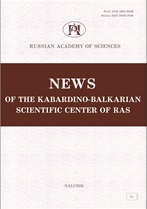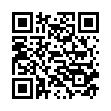|
This article is cited in 1 scientific paper (total in 1 paper)
System analysis, management and information processing
Analysis and classification of distributed sensor
systems of collaborative robotics
E. O. Cherskikh, A. I. Saveliev
St. Petersburg Federal Research Center of the Russian Academy of Sciences,
St. Petersburg Institute for Informatics and Automation of the Russian Academy of Sciences,
199178, Russia, St. Petersburg, 39, 14th line of Vasilievsky Island
Abstract:
The main goal of this analysis is to identify the most promising sensor nodes for the development of types of sensors used in sensor systems of collaborative robots, structures, and arrangement of
nodes on the bodies of robots. To achieve this goal, the existing design solutions for sensor assemblies
and systems were considered. The paper analyzes and classifies the nodes of distributed sensor systems
according to the composition, the method of communication of the nodes used and their location on the
robot bodies. Homogeneous or heterogeneous systems containing one of two types of nodes: combined
and non-combined, have been identified. It was found that combined nodes are the most promising for
development since include several types of sensors and can measure more environmental parameters
through a single node. The most used types of sensors, methods of their manufacture, design and properties have been determined. Combined nodes contain the following types of sensors: pressure, proximity, temperature, humidity, gas, illumination, heat flow, corrosion, accelerometer-gyroscope, infrared
and laser rangefinders, radar sensors. Among the listed, the most used are pressure, temperature, humidity sensors, inertial measurement units, light sensors, and microphones. The structures of sensor
nodes are considered and the nodes most promising for development are identified, as well as the types
of sensors used, methods of manufacturing and arrangement of nodes on the bodies of collaborative
robots. The disadvantages of the considered systems are highlighted, and a method is proposed to reduce their influence on the power consumption of the system, the computational load, and delays in
data transmission.
Keywords:
sensor systems, distributed systems; sensors, sensor system nodes, collaborative robots.
Received: 02.12.2021
Accepted: 12.12.2021
Citation:
E. O. Cherskikh, A. I. Saveliev, “Analysis and classification of distributed sensor
systems of collaborative robotics”, News of the Kabardino-Balkarian Scientific Center of the Russian Academy of Sciences, 2021, no. 6, 78–94
Linking options:
https://www.mathnet.ru/eng/izkab413 https://www.mathnet.ru/eng/izkab/y2021/i6/p78
|


| Statistics & downloads: |
| Abstract page: | 76 | | Full-text PDF : | 125 | | References: | 20 |
|





 Contact us:
Contact us: Terms of Use
Terms of Use
 Registration to the website
Registration to the website Logotypes
Logotypes








 Citation in format
Citation in format 
